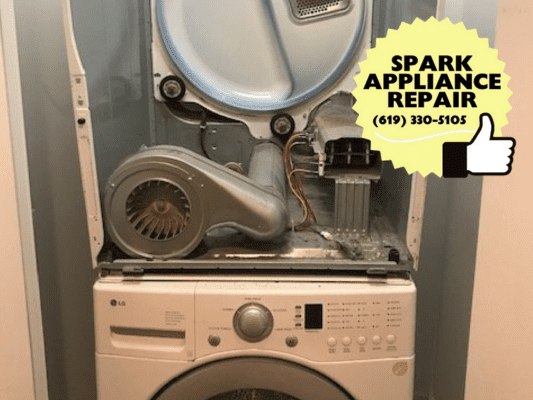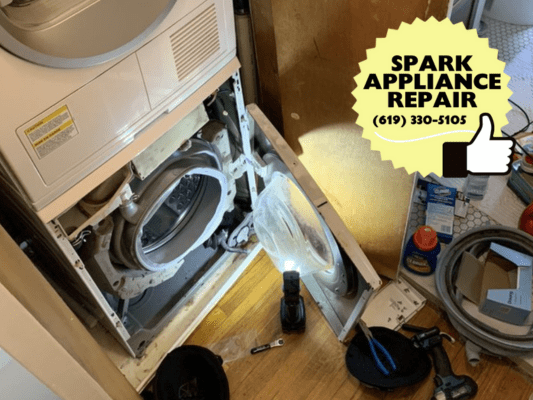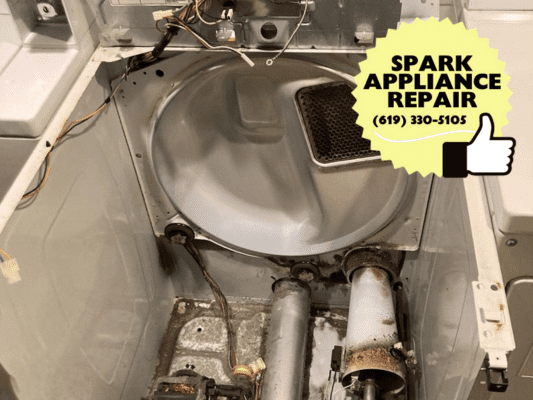
Clothes Taking Too Long to Dry? Fixing the Most Common Dryer Issues
Modern electric and gas dryers depend on intricate mechanisms that synchronize heating, spinning and ventilation for optimal performance removing lingering moisture from wet loads effectively. However, the most technologically advanced models still inevitably face common clothes dryer problems from declining components making cycles less efficient gradually over continual runtime.
Specific issues including inadequate interior heat supply, restricted airflow passageways, dysfunctional sensors and strained drum belts/rollers routinely plague dryers past warranties often with quick fixes restoring full functionality again saving homeowners costly full unit replacements prematurely when repairs restore operation just the same. This guide will break down the primary widespread dryer malfunctions alongside DIY and professional solutions for long-term tailored machine longevity.
Dryer Not Heating
Among the most common clothes dryer problems homeowners notice involves wet clothing continuing to exit machines signaling cycles fail to generate enough sustained heat activating fast evaporation. Several vital components work in concert elevating interior temperatures necessary for moisture removal. Specifically, coiled wires making up heating elements powered by central controls burn out over continual switching on/off slowly no longer emitting warmth inside drums. Located nearby, disk-shaped thermal fuses designed to blow temporarily shutting down units in overheated events also fail permanently from fatigue needing resets. Lastly ignition glow bars requiring electricity sparks for gas models lose striking capabilities not initiating flame flow to start heating sequences at all without regeneration.
Utilizing multimeters to diagnose continuity, homeowners can test all mentioned components for complete circuits confirming whether replacements are necessary relatively affordably from most hardware chains. Some soldering dexterity helps secure new igniter bars and fuse disks into premade sockets, but simple plug-in styles also exist for heating elements facilitating quick screw in place installations omitting complicated labor. Online repair video walkthroughs outline exact testing and replacement procedures for each unique dryer build.
Restricted Airflow and Ventilation
In addition to absent interior heat, common clothes dryer problems also arise when moist air lacks pathways escaping externally made worse when lacking outside ducting extension kits. Much internal moisture gets trapped recycling back into chambers failing to evaporate with clothing left damp after full cycles in these events. Several routine issues contribute including lint accumulation on filters, obsolete vents with diminishing diameters and overall lint clumping inside disjointed tubes installed at awkward angles. Together such gradual buildup greatly restricts airflow velocity necessary to channel humid interior air outside for fresh batches perpetually.
Fixing restricted ventilation starts with examining lint filters mounted along the inner rim of loading doors clearing visible surface level debris clogging mesh screens. Next, detach vents from rear exterior panels inspecting diameters and ribbed interiors for film slowly narrowing free space air passes through when installed inadequately lined up limiting flow. After clearing space hindrances, direct flexible aluminum ducting towards windows, exterior walls or roofing leading humidity outside not stagnating indoors. Only with wide open unblocked channels can rapid ventilation occur ensuring moisture leaves washing loads refreshed.
Worn Drum Rollers or Belts
Responsible for perpetually spinning wet loads evenly around heated chambers facilitating constant airstream contact for even drying, strained drum rollers as well as drive belts wear out over years of weight rotations. defective rollers make gradual grinding sounds from off-balance mobility slowly damaging backend roller tracks. Belts loosen by losingadhesive grip rotating inefficiently at gradually slower revolutions incapable of centrifugal spins disregarding settings. Both cause lengthy dry times from uneven distribution air hits stationary clothing in some spots but not others. Tighten belts around motor shafts or replacing deteriorating drum rollers restores smoothly whirling cycles hitting entire loads evenly aiding moisture removal efficacy.
Moisture Sensor Dysfunction
Rather than rely on timers, advanced models utilize electronic moisture sensor bars detecting evaporative progress determining when satisfactory levels complete programs. However, fuzzy buildups or steam ventilation dysfunctions gradually provide sensors false feedback. Specifically, coated bars send premature stop signals to main controls incorrectly gauging leftover moisture. Professionals gently clean bars with void damaging wedge connections to motherboards below restoring accurate electric signals. Adjusting sensor calibration configurations in service menus also correct oversensitive readings terminating runs too early for model specifications.
Gas Control Valve Defects
In gas dryer models control, knobs fail adjusting ignition fire volumes properly when coils stick overriding intended high-low commands. Given opening/closing repetition strains 15+ years, gradual performance declines happen from mineral buildup or general component fatigue needing replacements. Trained experts identify and secure new electronic gas vales with precise nozzle alignments guaranteeing steady flame emergence translating strong but regulated warmth for drying efficacy over years after quick installs.



Conclusion
While today’s dryers leverage more technology than past generations, common clothes dryer problems still routinely emerge from declining heating elements, worn belts, blocked ventilation as well as defective sensors and valves affecting key mechanisms gradually. But instead of reacting to full-blown breakdown replacement emergencies costing hundreds, homeowners aware of most widespread issues assess and resolve components proactively – a more affordable repair protecting investments with units functioning like new again after assessing concerning symptoms early during malfunction onset. Consider adding ventilation improvement capabilities to further optimize existing assets.
Frequently Asked Questions About Most Common Dryer Problems
A slipped belt causing loose contact with the motor drive shaft is a common problem resulting in loud humming sounds without full drum rotations or heat activation during cycles. Tightening or replacing belts fixes this widespread failure.
Restricted vents clogged with lint limiting airflow is an incredibly common problem lowering dryer efficacy over time once debris builds up. Cleaning vents restores air circulation resolving this common clothes dryer failure.
Response: An overloaded motor straining to rotate heavy, uneven loads is the most common mechanical problem triggering sudden shutdowns to prevent full breakdowns. This common dryer failure simply requires lighter, more balanced drying loads.
Gradually declining thermostats represent a very common problem failing to regulate temperature spikes as mechanical parts fatigue over a decade of use. This common clothes dryer failure requires a thermostat replacement to maintain safe heat levels.
Wear and mineral buildup on gas valve components is a very common problem throwing off intended flame flow to activate heating. Replacing outdated gas valves remedies this common clothes dryer malfunction.






